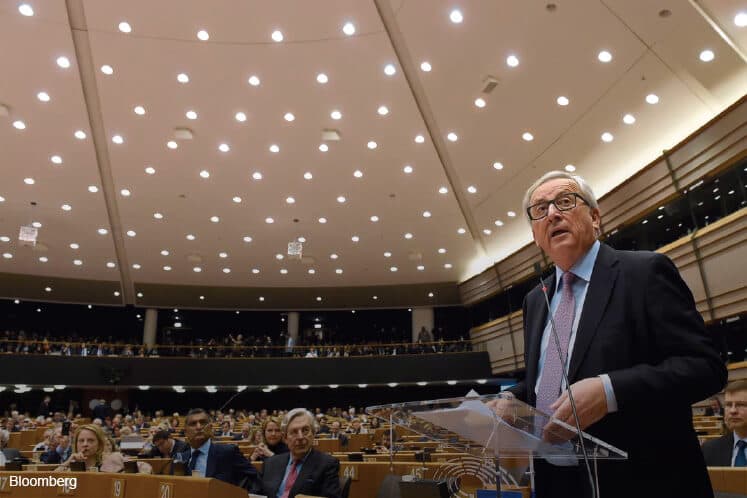
IN trademark European Union (EU) style, European Commission (EC) President Jean-Claude Juncker outlined a vision for the bloc’s future on Wednesday by presenting five of them. While some will see an attempt to shape the agenda without taking responsibility, it sounded more like an impatient call for members to find the courage to rally around an actual strategic decision.
By striking a neutral position, Juncker is paying tribute to the perception, especially since Brexit, that the EU is under threat as a disunited group of countries with conflicting interests. Yet Europeans trust the union more than their own national parliaments and governments, according to November’s Eurobarometer survey, and that trust rose since the spring. More than a third of Europeans have a positive view of the EU, while only a quarter have a negative one.
Of the five scenarios, Juncker openly disparaged one — for the EU to revert to a trade bloc as many Brexiters wanted — while the one about moving full speed towards a federation is not fully backed by a single national leader. Juncker won applause from the European parliament when he declared that the union was about more than free trade, but he refused to rank the three options that are actually on the table: continue as before, create a multispeed EU in which some members move faster toward a closer union than others, or focus the EU’s mission on shorter list of goals.
There is nothing new about the scenarios, which raises questions about the timing of a report in the Italian daily La Repubblica saying that German Chancellor Angela Merkel and Dutch Prime Minister Mark Rutte asked Juncker to delay his presentation at least until leaders meet on March 25 to commemorate the 60th anniversary of the Treaty of Rome. The newspaper also reported Juncker was ready to resign in frustration, though he formally denied it.
I doubt it was a journalistic error. Juncker is fed up with “Brussels” being blamed for everything that goes wrong in Europe; he devoted part of his speech on Wednesday to that frustration. He seems to be trying to force a debate about the very purpose of the EU.
He made it clear that he does not believe the EC has the powers to do what national leaders expect from it — for example, to tackle issues like youth unemployment. So that leaves two scenarios. One is the technocratic one, which I believe to be Juncker’s current preference: Give Brussels a strong mandate to do just a few important things. Juncker hinted in his speech that he liked this idea, saying his commission had switched from making 130 regulatory proposals a year to just 23.
From a managerial point of view, this makes perfect sense: The European institutions’ remit is too broad for its budget and its enforcement powers today. Concentrating on just a few common areas of interest — perhaps climate change, perhaps common security and border protection — would also defuse the criticism of Brussels meddling and overreach. The problem with this plan is that the Brussels bureaucracy is so hard to navigate that national governments likely will not be interested in working to pare it back; they certainly will not get any immediate political benefits from initiating that process.
That leaves Merkel’s preferred scenario, also backed by France’s socialist government and many Western European politicians: a multispeed Europe in which a small group of countries tests closer integration, leading perhaps to a fiscal union, and other nations have the opportunity to join or stay out. There are, however, many problems with this option. Eastern European nations tend to see it as a way to reverse the EU’s eastward expansion, and Poland and Hungary — the EU’s only two countries governed by illiberal, populist governments — feel this approach is directed specifically against them. Jaroslaw Kaczynski, the power behind the Polish government, has said that it would lead to the EU’s “breakdown” and “liquidation.”
The multispeed option also reduces Europe’s opportunities to be an effective counterweight to a protectionist US. For that, it needs to remove the remaining trade barriers inside the EU, including those created by the circulation of 11 different currencies, and not to make those barriers higher by creating a closer union for a smaller number of states.
The choice Juncker outlined is not easy or trivial. The EU’s usual response to hard choices is to ignore them, but when all the options are described in clear and stark terms, that is an unattractive, especially cowardly option. It is time the current EU nation state leaders showed some vision, and some determination to back it up. — Bloomberg